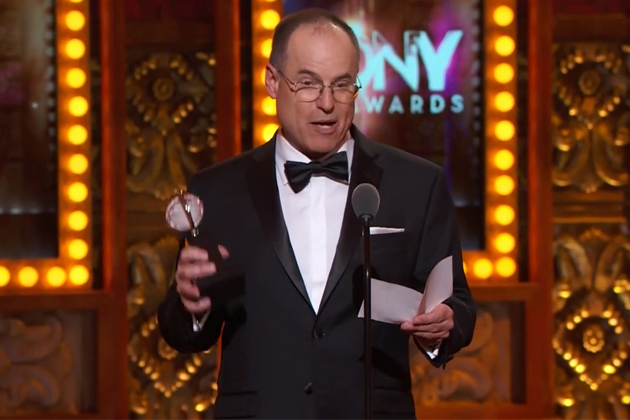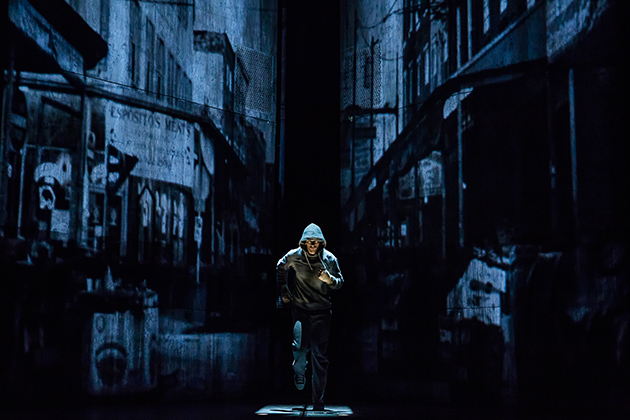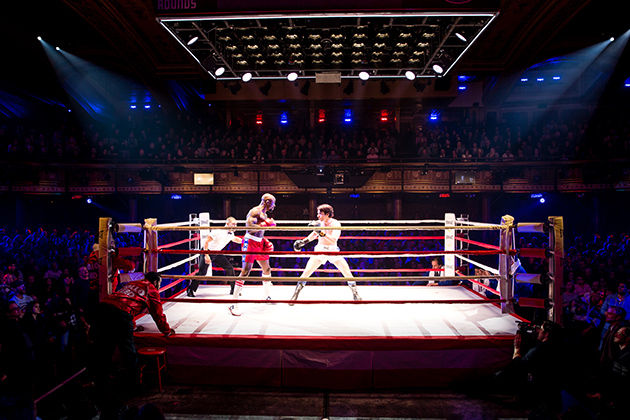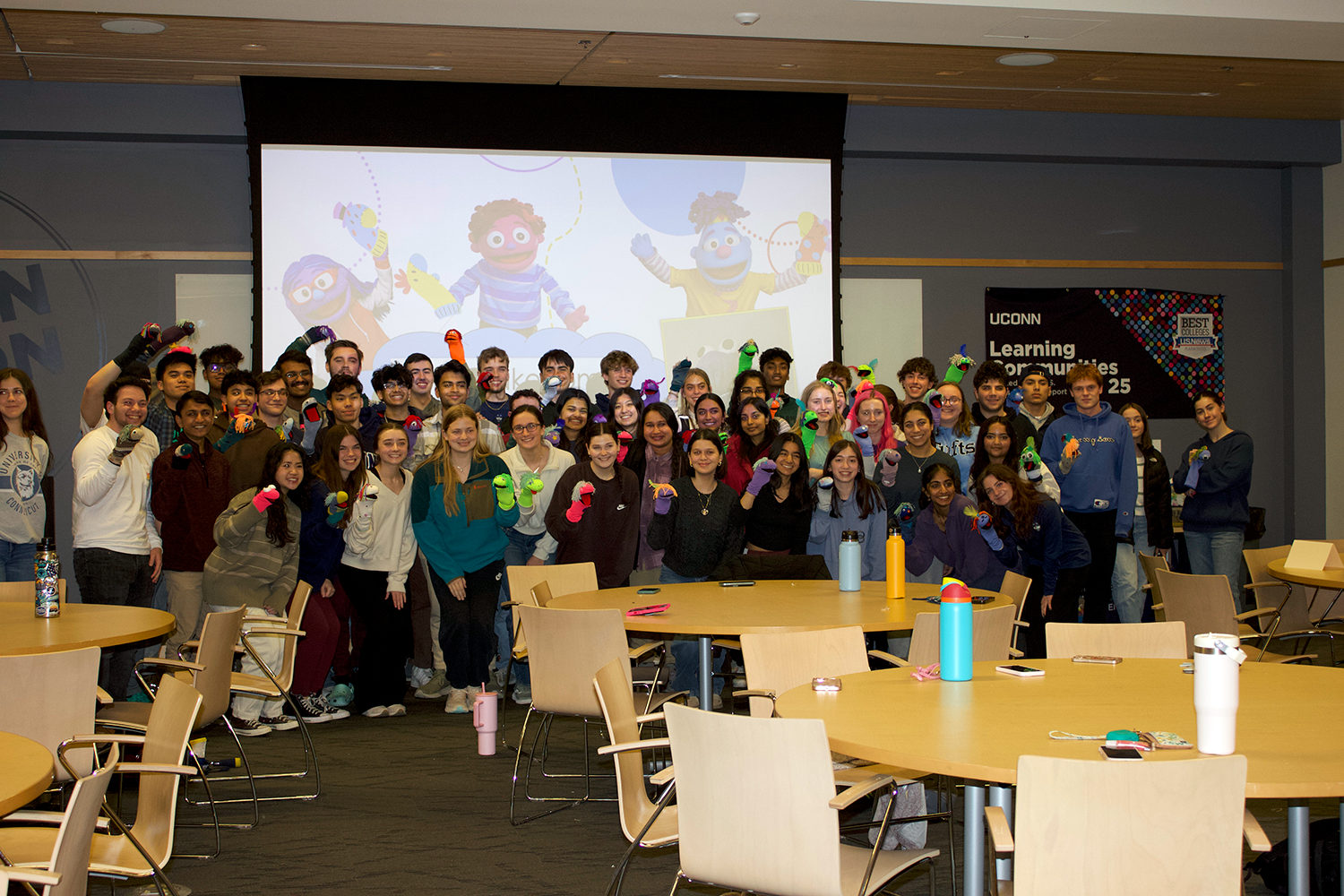
Chris Barreca ’79 (SFA) says he doesn’t believe much in awards, but if he does receive one, it provides the opportunity for him to acknowledge those who are responsible for his accomplishments.
So as he stood on stage at Radio City Music Hall on June 8 holding the 2014 Tony Award for Outstanding Set Design for “Rocky,” he spent his time thanking the behind-the-scenes people he worked with to develop the Broadway musical.
“Every time Andy Karl sings ‘Keep On Standing,’ I think of the thousands of people who have supported me throughout my life,” Barreca said during the nationwide television broadcast of the awards. Karl is the actor who stars as Rocky Balboa in the stage adaptation of the Sylvester Stallone film that won the 1976 Academy Award for Best Picture.
Honored many times for his stage designs, this was the first time Barreca was nominated for the theater industry’s top honor. During his career, he has designed more than 200 productions, staged throughout the United States, on Broadway, in London, and as far away as Australia. He also has had a concurrent career lecturing and teaching at some of the nation’s most prestigious theater programs, including Yale School of Drama, and the School of Visual Arts and California Institute of Arts in Los Angeles, where today he serves as head of the Design Department.
“I don’t think the people I know who are successful work for awards,” he says. “I love my work. What’s really nice about getting the award is the acknowledgment of all that work. It makes you feel like you can keep going.”

Barreca says the stage production of “Rocky” presented several challenges, including having multiple iconic locations that are integral to the story of the rise of an unheralded boxer who gets the chance to fight for the world heavyweight championship. Among the most familiar scenes are Rocky training in a meat packing plant by hitting a side of beef, running through the streets of Philadelphia to climb the steps of the Philadelphia Art Museum, and the drama and brutality of the championship fight.
One of the key elements of Barreca’s stage design – described as “wondrous” by Entertainment Weekly – is the boxing ring that rises up and down, requiring some theatergoers to be moved into front-row seats for the boxing matches. The ring also turns to become a projection screen for some scenes.

“When we started previews, we were surprised at how the audience responded,” Barreca says. “Because the story is so embedded in people’s head, when the meat comes in, people go crazy. We intentionally made these things epic. Design is not a background, it’s a means. If you think of a performance as an orchestra, and the character as an instrument in the orchestra, the design is several instruments in the orchestra. It depends on the piece that’s being played.”
Using musical analogies comes easy to Barecca, who arrived in Storrs as an undergraduate to pursue a double major in music and theater. A trumpeter, he intended to become a performer. But he continued to use skills he had learned as a teenager living in Weston, Conn., working for Atlas Scenic Studio in Bridgeport, which built sets for Broadway shows and the Metropolitan Opera.
On campus, he assisted Frank Ballard in building puppets and scenery for shows the legendary puppeteer would take on tour. He also started to design sets for shows at the Jorgensen Center for the Performing Arts. The experience changed his thinking about his future.
At UConn, I found my voice. I was inspired. –Chris Barreca
“I decided I wanted to be a generative artist, instead of interpretive,” Barreca says. “Design is a generative form. It’s a visual work of art and it can stand on its own. Yes, it isn’t interpretive, because I’m working off a text, but it’s more generative than I was as an instrumentalist.”
Encouraged by Jerry Rojo, head of the Department of Dramatic Arts and now professor emeritus of dramatic arts, and James Ingalls ’72 (SFA), stage manager at the Yale Repertory Theatre and a noted lighting designer, Barreca headed to the Yale School of Drama, where he studied under Ming Cho Lee and Michael Yeargan, two longtime professors and noted designers.
He began teaching when Yeargan asked him to lead a Yale class, and he later became an advisor to undergraduate students. After serving as a guest lecturer for more than a dozen years, he began teaching in 1996 at California Institute of Arts.
His design work around the United States includes theaters such as The Gutherie, Hartford Stage, ACT in San Francisco, Baltimore Center Stage, The Ford Theater in Washington, D.C., The Mark Taper Forum, Seattle Repertory Theater, Berkeley Repertory Theater, The Dallas Theater Center, The Yale Repertory Theater, and The Roundabout Theatre Company and Lincoln Center in New York City.
His Broadway premieres include the musicals “Marie Christine” and Gabriel Garcia Marquez’s “Chronicle of a Death Foretold” (American Theater Wing Award) – both for Lincoln Center Theater; “The Violet Hour;” “Our Country’s Good” (Prague Quadrennial Selection), and “Search and Destroy” (Drama-Logue Award).
Barreca says that as the son of an executive at General Electric Co. who moved frequently before settling near the company’s headquarters in Connecticut, he experienced “a rough academic childhood” before heading to UConn.
“I was a provisional student at first because I was a good musician,” he says. “Moving around a lot was good preparation for working the theater. At UConn, I found my voice. I was inspired.”



